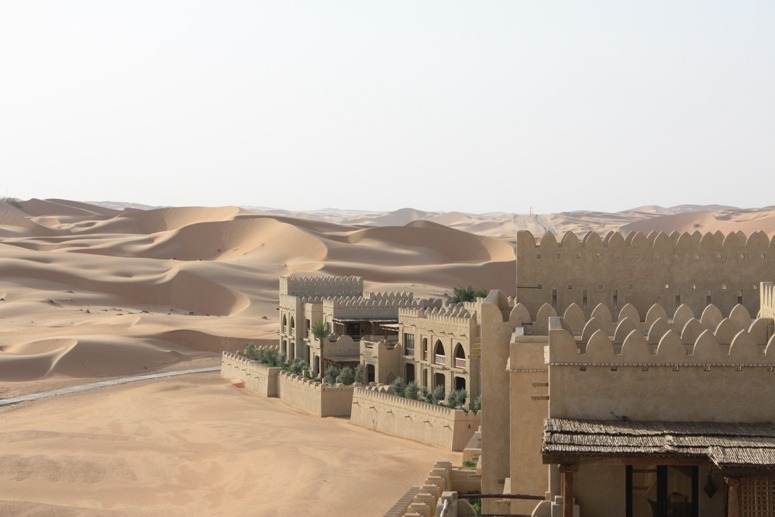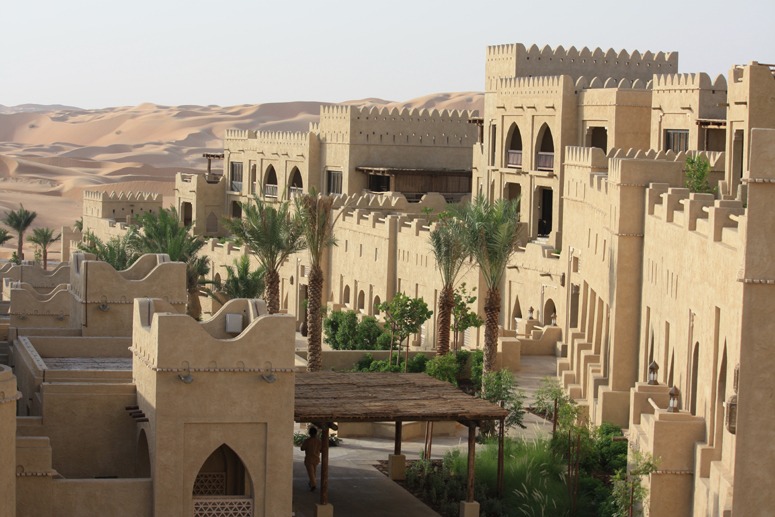
 A design without a concept is usually not worth much. Where is the boundary where a concept becomes a theme? Where is the boundary where a theme becomes kitsch? And where is the boundary where a concept becomes art? Is there a context in which we can compare Disneyland with the Garden of Cosmic Speculation? Or with Little Sparta? Is Rousham merely an Augustan Theme Park? And where does Portmeirion fit in? Many clients – particularly in young, brash economies – confuse themes and concepts, how can we advise them? Does the West still have noble, Augustan-type concepts to offer the world, or do we only do cartoons these days?
A design without a concept is usually not worth much. Where is the boundary where a concept becomes a theme? Where is the boundary where a theme becomes kitsch? And where is the boundary where a concept becomes art? Is there a context in which we can compare Disneyland with the Garden of Cosmic Speculation? Or with Little Sparta? Is Rousham merely an Augustan Theme Park? And where does Portmeirion fit in? Many clients – particularly in young, brash economies – confuse themes and concepts, how can we advise them? Does the West still have noble, Augustan-type concepts to offer the world, or do we only do cartoons these days?
The images show the Qasr Al Sarab Hotel on the fringe of Abu Dhabi’s Liwa Desert, based on an image engineer’s imagination of Arabia and very Disneyesque in its dreamweaving – but ultimately inauthentic – attention to detail.

I suppose it is important to know something about the period in which a design in conceived and constructed. Lawrence would you say the design of Brighton Pavilion follows a theme rather than a concept?
During the Regency period in England when Brighton Pavilion was constructed the Prince Regent, the Prince of Wales, ruled in his fathers stead. [ http://rpmedia.ask.com/ts?u=/wikipedia/commons/thumb/7/73/Brighton_Pavilion_from_Views_of_the_Royal_Pavilion_(1826)_edited.jpg/120px-Brighton_Pavilion_from_Views_of_the_Royal_Pavilion_(1826)_edited.jpg ]
“Regarded by some as an architectural monstrosity, it began as a cottage, and was intended to be in the Chinese style, but the idea of an exterior in Indian style had entirely captured Prince George’s imagination.”
Following the royal patronage of the seaside location of Brighton in 1826 500 houses were said to be under construction.
The highlight of the Brighton season was “the annual celebration of the Prince’s birthday on 12 August and a mock naval battle was held with soldiers in full uniform on Race Hill to commemorate it.”
The Regency period was considered to be a mini renaissance in art and architecture. When he became King, George IV enlarged Buckingham House to become Buckingham Palace.
The Brighton Pavilion definitely follows a theme rather than a concept. Why? I suppose because it is a product of whimsy, or so it seems today. Like Portmeirion and other similar follies the Brighton Pavilion does seem to have improved with age in terms of public acceptance. On the other hand, I would say that the Hoover Building [ http://www.flickr.com/photos/dgeezer/2876215241/ ] follows a concept: the optimism of the new machine age expressed as architecture.
I would agree. Although I don’t believe the current landscaping reflects the original eyptian style 1930s art deco influences. Perhaps Tom could comment on this? (It is a little difficult to find examples of major art deco gardens on the web.)
[ http://www.gardenvisit.com/garden/new_orleans_botanical_garden ]
The Tesco’s extensions at the rear, while good in intention, are possibly not as subtle in execution as the original building.
[ http://en.wikipedia.org/wiki/Hoover_Building ]
Not sure, but this may be a result of a type of heritage impressionism? Closer attention to the work of the original architects may have assisted here.
[ http://en.wikipedia.org/wiki/Wallis,_Gilbert_and_Partners ]
The Qasr Al Sarab Hotel looks very well done and high quality is a high virtue. I would very much rather sleep in the Qasr Al Sarab Hotel than a modern anywhere block which happened to be in Dubai.
A brief history of Themed Design could run as follows (1) renaissance designers adopted classical themes for their villas and gardens, because they wanted to see a re-birth of first class (‘classical’) design (2) Neoclassical designers, of buildings and gardens in north Europe, had a broadly similar idea and wished to re-create the landscape of classical antiquity – in places like Castle Howard, Stowe and Stourhead (3) this led to the picturesque theory that one could learn about high visual quality from paintings (4) as Romantic artists’ and travellers gaze widened from the Classical World to the Whole World, in the nineteenth century, other types of scenery were recognized has having sufficiently high quality to be worthy of imitation (5) Humphry Repton made the proposal for imitating Indian scenery, which led to the Brighton Pavilion (6) Arts and Crafts designers had a medievalising theme (7) The picturesque theme of Portmerion derived from the hill towns of medieval Italy (8) Modernist design, amongst other things, was a revival of the classical idea that design should be based on the simplicities of function, structure and mathematical proportion (9) a century after its inception, the continued use of modernist themes can be regarded as another type of classical revival.
I am unsure about how Art Deco fits into this but the best example of an Art Deco influenced garden designer is Fletcher Steele.
Themed design is kitschey when it is badly done and art when it is well done. If Palladio had lacked talent then his work would still be regarded as kitsch – which is pretty much how Ruskin saw it in the ninteenth century. Ruskin also slammed Claude, Poussin and Rosa.
Amazing! Thankyou. [ http://thlandscapedesign.blogspot.com/2010/07/naumkeag.html ] and [ http://thlandscapedesign.blogspot.com/2010/07/naumkeag-continued.html ] It isn’t difficult to see why Dan Kiley was inspired by his work.
Naumkeag leaves me with a similar feeling to the Parc Guell: I wish there had been more brave client-and-designer partnerships to produce more projects of their ilk. Also, I think professional bodies should devote more effort to educating clients and less effort to supervising the education of future members, which should be the primary responsibility of the universities.
The QAS Hotel works for me visually.
The colour is key in this.
Time seems to allow all sorts of themes respectability!
R
I agree about the colour but the contrast between the predominant hue and the smallish protected green spaces is also very welcome.